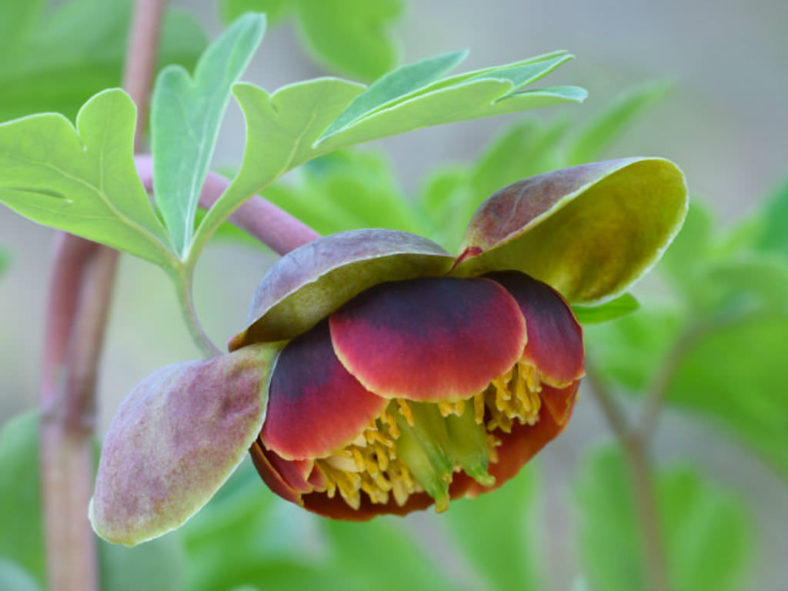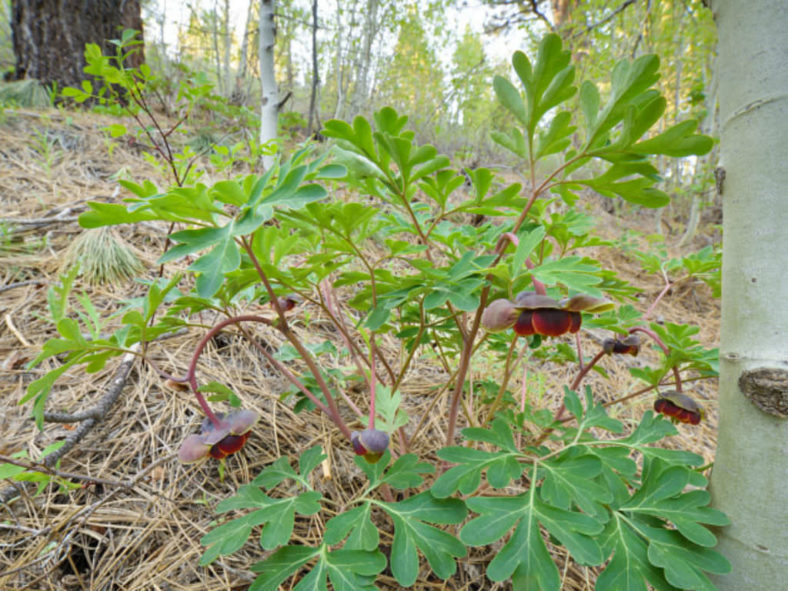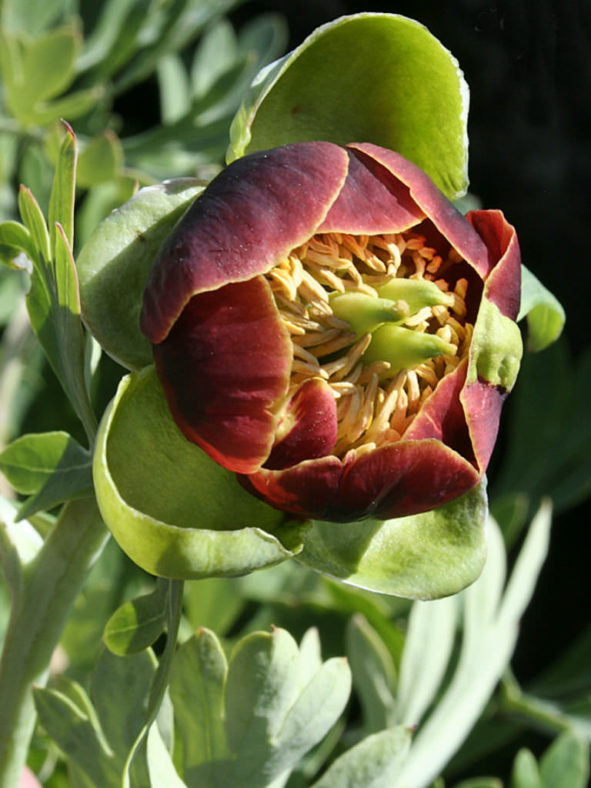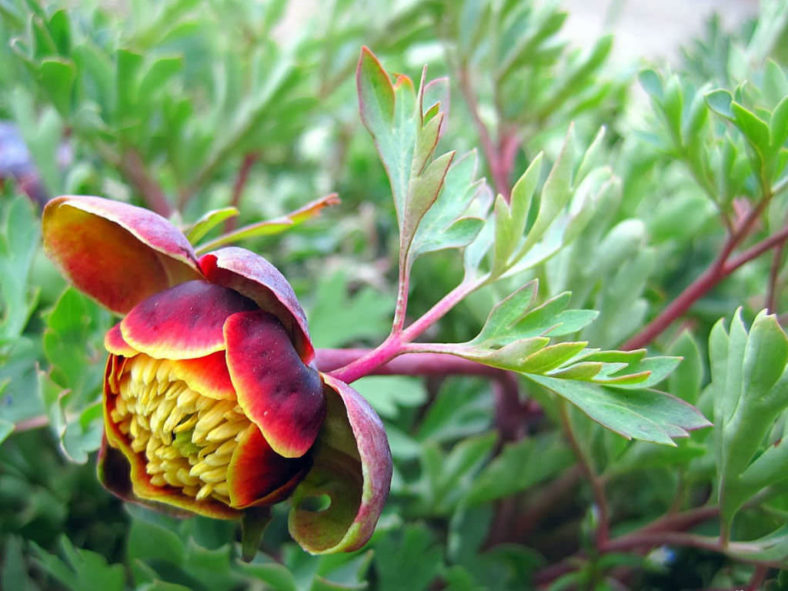Scientific Name
Paeonia brownii Douglas ex Hook.
Common Name(s)
Brown's Peony, Native Peony, Western Peony
Synonym(s)
Paeonia brownii subsp. brownii
Scientific Classification
Family: Paeoniaceae
Genus: Paeonia
Flower
Color: Dark maroon
Bloom Time: March to June
Description
Paeonia brownii is a herbaceous perennial with dark maroon flowers. It grows up to 20 inches (50 cm) tall. Each pinkish stem is somewhat decumbent and has 5 to 8 twice compound or deeply incised, bluish-green, hairless, somewhat fleshy leaves, which may develop purple-tinged edges when temperatures are low. The blades of the leaflets or segments are oval to inverted egg-shaped, up to 2.4 inches (6 cm) long and up to 2 inches (5 cm) wide, with a narrowed, stalk-like foot and a stump or rounded tip.
The flowers are up to 1.2 inches (3 cm) in diameter. Flowering occurs from March to June, followed by long dormancy.

Hardiness
USDA hardiness zone 3a to 6b: from −40 °F (−40 °C) to 0 °F (−17.8 °C).
How to Grow and Care
The hardy Peony plant prefers full sun, pH-neutral, well-draining soil, and a deep cold spell each year to help it regenerate in the spring. Depending on the variety you choose, they can flower from spring through early summer with plump, showy, feathery blooms in hues of pink, red, peach, and white.
Unlike most perennials, Peonies do not need to be dug up and divided as they grow and mature.
The ideal time to plant Peony tubers is late fall before the first hard frost. Unfortunately, peonies do not respond well to being transplanted, so we recommend planting tubers rather than transplanting an established plant.
If your newly growing Peonies seem leggy or are starting to bend close to the ground, gently stake the plant stalk so it remains upright.
It's normal to discover ants crawling on Peony flowers. These ants eat nectar and not the plant itself. Unfortunately, they also eat pest insects. Simply shake off the ants if you decide to cut some of the flowers. Otherwise, leave them alone.
See more at How to Grow and Care for Peonies.
Origin
This species is native to the western United States and usually grows at altitude, often undergrowth in part-shade.
Links
- Back to genus Paeonia
- Plantpedia: Browse flowering plants by Scientific Name, Common Name, Genus, Family, USDA Hardiness Zone, or Origin
Photo Gallery
Click on a photo to see a larger version.




